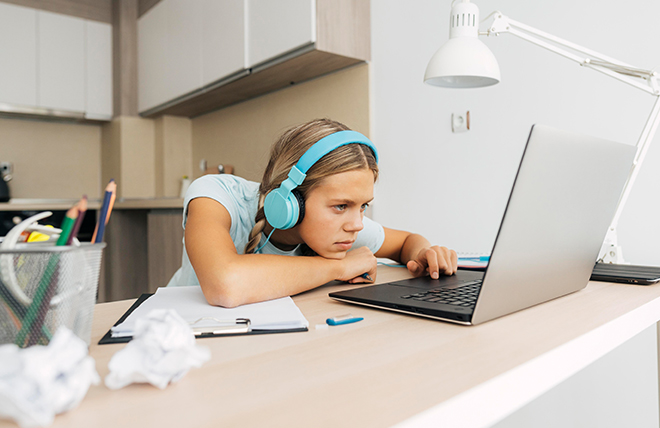
By high school guest-blogger Dalal Hassane
The COVID-19 pandemic has foisted an immense weight of difficulties onto many people. Educational institutions have been dramatically altered by this crisis. For students like myself, wholesome mornings in school libraries and heading off to first period Spanish with a friend have turned into tedious (and lonely) five-minute hassles to make do with a home workspace and log into Zoom. For many students, this home workspace is far from ideal for fostering learning.
One big difficulty that schools have been facing during remote learning is eliciting a sense of community, as communication through screens is quite different from the emotional connections that can be made in person on a day-to-day basis. It’s been an increasing trend for teachers and even administrators to require that students turn their cameras on in order to mimic the classroom setting as best as possible.
This push for students to turn their cameras on, while well-meaning, can pose a great deal of harm to certain students and neglects to recognize students’ individual situations. With the pandemic forcing us to stay at home, many students now have to cope with isolating, full-time struggles related to mental health, abusive households, and doing school work in an environment different from their peers. To avoid causing further harm, it is vital that teachers understand the potential negative consequences of camera-on policies.
For example, students who must attend classes from abusive households have to cope with the burdens of managing their schoolwork, paying attention to classes, and their home situations. Implementing a requirement to turn cameras on adds another weight to the shoulders of these students, who will now have to pay close attention to their surroundings and what is in their camera frame. This scenario similarly applies to students whose environments may be different from their peers for religious, cultural, or socioeconomic reasons. Additionally, many students from low-income families cannot afford the comfortable or clean Zoom backgrounds that are often expected by peers and teachers. These are just a few of many struggles that students from complicated households must endure as a result of uninformed camera rules.
Students with mental health problems can be similarly challenged by camera-on policies. With COVID-19 changing their day-to-day lives and interactions, mental health has become an even more difficult struggle for many students. Even prior to COVID-19, mental health problems have been perpetually stigmatized and often neglected. When schools force these students to turn their cameras on, regardless of its impact on their health, it is yet another way they display neglect for the magnitude of these issues. As one high school junior noted, “it’s emotionally draining and tiring to have to be conscious of how I look and react in the camera frame while simultaneously facing the struggles of quarantine.”
Remote learning has inflicted many struggles and burdens on both students and teachers alike. Seeking to create community in these isolating times is clearly important, however, it is also vital that administrators and faculty pay more attention to the harm caused by not only forcing students to turn their cameras on, but penalizing them when they choose not to. For teachers and administrators to truly support all of their students in “these unprecedented times,” students from diverse backgrounds and complicated home environments need them to expand their understanding of the harms that can be caused by camera-on requirements. We need them to uphold that promise of support and focus on how to make remote learning a safe and accessible space for students from all backgrounds.


